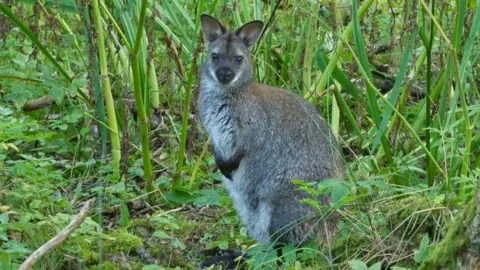Isle of Man wallaby study held before culling decision
 MANXSCENES
MANXSCENESA study of wild wallabies on the Isle of Man will help the government set a policy for the control of the non-native species, an MHK has said.
More than 100 are thought to live on the island after several escaped from a wildlife park in the 1960s.
Earlier this month the ManxSCPA reported a wallaby had to be put down after being shot in the head in Glen Auldyn.
Dr Michelle Haywood said the impact of the marsupials needed to be understood.
The Department of Environment, Food and Agriculture (DEFA) is working with local experts to work out the size and health of the wallaby population.
'Population growth'
As a non-native species, wallabies are not protected under the island's Wildlife Act 1990, meaning they can be humanely culled.
However, the marsupials, which are native to Australia, are protected under animal cruelty laws.
DEFA minister Clare Barber told the House of Keys her department would conduct a study in conjunction with the Manx Nature Conservation Forum to help set a policy on the control of the animals if necessary.
Wild wallabies, were "akin to marmite, in that some cherish them, while others view them as a pest", she added.
Dr Haywood said although the wallaby population had grown, its impact on local wildlife was not fully understood.
She said: "If that is hugely negative, then that would lead you to needing to control numbers, but if it is not, then we may decide that it is okay and we can let them carry on as they are."
A previous study had shown they overgrazed on native plants, and there were suggestions they disturbed hen harrier nests, she added.

Why not follow BBC Isle of Man on Facebook and Twitter? You can also send story ideas to [email protected]
